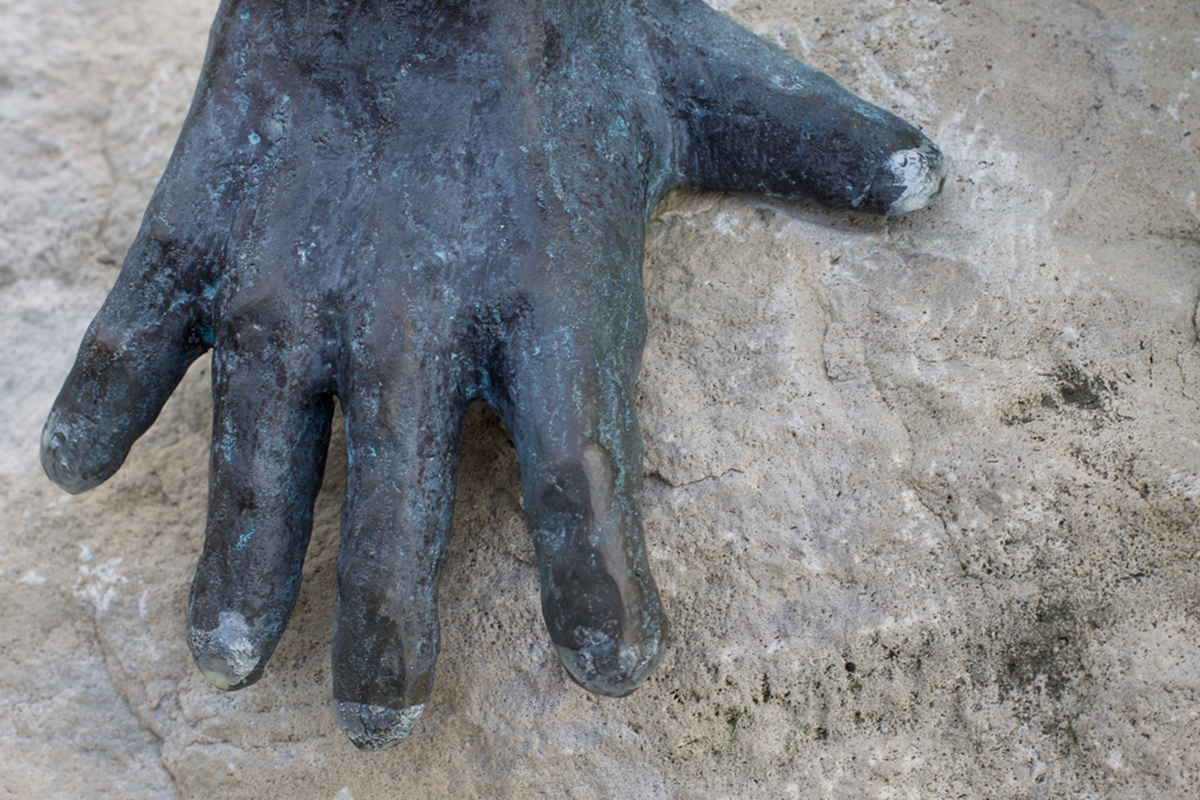Fibrodysplasia ossificans progressiva (FOP) is a very rare genetic disorder of the connective tissues. FOP is also referred to as “Stone Man Syndrome,” the disorder makes muscle tissue and ligaments harden and form into bone tissue that develops outside the normal skeleton. Fibrodysplasia ossificans progressiva is normally noticed during early childhood, it generally begins with the neck and shoulders, gradually working its way down the body and the limbs.

How rare is fibrodysplasia ossificans progressiva?
According to statistical information released by the International Fibrodysplasia Ossificans Progressiva Association, FOP is a disease which affects 1 in 2 million people. FOP has no racial, gender or ethnic patterns and there are 800 confirmed cases all around the world.
What are the causes of fibrodysplasia ossificans progressiva?
The following are causes of FOP:
- Genetics: People with FOP are born with mutations in the activin receptor type I gene (ACVR1). The protein helps to regulate the development and growth of bones and muscles. When there is a mutation in the ACVR1 gene, scientists believe it results in too much bone growth, which happens in fibrodysplasia ossificans progressiva.
- Inheritance: If fibrodysplasia ossificans progressive is inherited, it means it is passed down through an autosomal dominant trait. In inherited FOP, one parent carries the gene and passes it to the child. However, this disease is rarely inherited because most individuals with FOP are infertile.
- Random occurrence: FOP can occur randomly and this is how most diagnoses are made, except those cases which are inherited. With random FOP, the genetic mutation happens when the egg and sperm are developing.
What are the symptoms of FOP?
Fibrodysplasia ossificans progressiva is genetic in nature and the following symptoms can be indicative of the disease:
- Children with FOP are born having large, deformed toes
- In children born with FOP, there may be missing toe joints or a notable lump at the minor joint
- FOP in children will usually begin with bones in the neck, and gradually it will be witnessed in the chest, shoulders and arms and finally it will reach the feet
- The disease causes a loss of mobility in the joints
- The inability to open the mouth fully, which can limit eating and speech
- Extra bone formation around the rib cage which will restrict the expansion of the lungs and cause breathing issues
- As the disease progresses its effects can be witnessed in the caudal, ventricle, distal and ventral regions of the body
See Also: Neurofibromatosis Genetic Disorder: Nerve Tissue, Skin and Bones Abnormalities
FOP misdiagnosis can cause a doctor to order biopsies of the bones, which can actually result in exacerbation of lumps and cause a worsening in the disease.
What is the difference between FOP bones and normal bones?
Bone is a living tissue and made up of cartilage. Fibrodysplasia ossificans progressiva bone appears as normal bone tissue, but it develops in the wrong places. Osteogenesis and ossification are medical terms which refer to the formation of bone. Most bones in the human body grow and heal up after a break through endochondral bone formation, which is how FOP bones grow. Cartilage forms first and then the bone will eventually take the place of cartilage.
Role Of Genetics In The Mutation And The Formation Of FOP Bone Tissues
With FOP, there is a mutation in the gene which encodes the activin receptor type 1and it tells the body to make extra bone. The ACVR1 gene helps control something called bone morphogenetic proteins or BMP’s. Extra-skeletal bone formation in those with FOP can also be caused by soft tissue injury, the disease causes an alteration in the signals that regular normal bone formation. In people with FOP, the gene is active without bone morphogenetic proteins and it causes over activity and it results in hyper stimulation and extra bones forming.

How is fibrodysplasia ossificans progressiva diagnosed?
In most cases of FOP, an accurate diagnosis can be made by looking at the patient’s characteristic malformation of the big toe. In addition, a doctor may notice rapidly changes in swellings on the neck, back or head.
The difficulty in diagnosing FOP and error rates have caused undue pain and suffering for many people all over the world. Misdiagnosing FOP can lead a person to unneeded invasive medical procedures like a biopsy, which can result in permanent complications and loss of mobility. Three of the most commonly misdiagnosed conditions for fibrodysplasia ossificans progressiva include aggressive juvenile fibromatosis, progressive osseous heteroplasia and cancer.
What treatment options are available for fibrodysplasia ossificans progressiva?
FOP is not curable and because the disease is so rare, treating it can be very challenging for physicians. FOP bone cannot be disturbed because it can result in making the disease much worse. If a doctor were to attempt surgical removal of the FOP bone tissue, it could cause a flare-up of the condition and result in the bone growing back and possibly making even more bone than before.
Doctors generally use medications to treat the symptoms of FOP. Because there are not many cases of FOP, it is hard to gather a group large enough to host research trials to study the disease. The most common medications used to treat the symptoms of FOP include the following:
- Aminobiphosphates: This type of drug suppresses the formation of blood vessels, which is what bone tissue requires for growth. Aminobiphosphates also limit bone resorption through shortening the life span of osteoclasts.
- Corticosteroids: The use of corticosteroids like Prednisone during a flare-up can help decrease inflammation and swelling, thus shortening the duration of the inflammatory process.
- Thalidomide: Thalidomide is an anti-angiogenic drug which helps to limit the immune system response and function during an FOP flare-up.
See Also: Fahr's Syndrome Or Brain Stones, A Rare Neurological Disease
Prognosis for FOP
Medical science needs to fully understand the role the inflammatory process plays in triggering flare-ups of FOP.
Ultimately, fibrodysplasia ossificans progressiva is fatal, which is why medical science must develop new treatment options and study the disease more aggressively.
- ghr.nlm.nih.gov/condition/fibrodysplasia-ossificans-progressiva
- www.ifopa.org/
- www.ifopa.org/fop-fact-sheet.html
- www.ucsfbenioffchildrens.org/conditions/fibrodysplasia_ossificans_progressiva/
- www.omim.org/entry/135100
- www.orpha.net/consor/cgi-bin/Disease_Search.php?lng=EN&data_id=205&Disease_Disease_Search_diseaseGroup=fibrodysplasia&Disease_Disease_Search_diseaseType=Pat&Disease(s)%20concerned=Fibrodysplasia-ossificans-progressiva&title=Fibrodysplasia-ossificans-progressiva&search=Disease_Search_Simple
- Photo courtesy of Alan Levine by Flickr: www.flickr.com/photos/cogdog/6572853283
- Photo courtesy of i threw a guitar at him. by Flickr: www.flickr.com/photos/becc/9267153944


Your thoughts on this